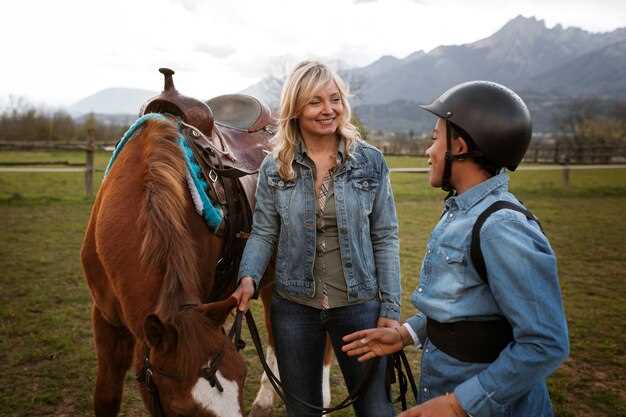
In the world of competitive racing, understanding the nuances of your opponents’ strategies can be the key to success. Every race is not just a test of speed, but a battle of wits where the ability to decipher and anticipate the tactics of other riders plays a crucial role. This skill is often referred to as the art of reading other riders, and it can significantly enhance your own crafting of a winning approach.
As you prepare for a race, observing the riding style, body language, and maneuvering of fellow competitors can provide invaluable insights. Each rider brings their unique craft to the track, shaped by their experiences, strengths, and weaknesses. By mastering the ability to read these strategies, you can adapt your own tactics to position yourself advantageously throughout the competition.
From predicting when a rival may attempt a pass to recognizing moments of hesitation, the process of analyzing other riders not only sharpens your instincts but also fortifies your mental game. Ultimately, the deeper your understanding of your competitors’ methods, the better equipped you will be to devise your own race plan that leverages their weaknesses while enhancing your strengths.
Analyzing Opponents’ Line Choices in Cornering

In competitive racing, the lines taken by opponents through corners can reveal critical insights into their skills and strategies. Observing these line choices not only allows you to anticipate their movements but also helps in refining your own racing craft. By analyzing how other riders navigate turns, you can identify patterns and potential weaknesses that may be exploited during the race.
When watching competitors, focus on the entry, apex, and exit of each corner. Take note of their braking points and acceleration phases. A rider who consistently takes a wider line may prioritize control and stability, whereas one who hugs the inside line may be aiming for faster lap times but risks losing grip. Understanding these nuances reveals their racing mindset and technical abilities.
Additionally, consider how environmental factors influence line choices. Different track conditions can prompt riders to modify their approach. For instance, wet surfaces may lead to more cautious lines, whereas dry conditions open up possibilities for aggressive maneuvers. By assessing their reactions to varying conditions, you gain an edge in predicting their future actions during the race.
Another essential aspect of analyzing opponents’ line choices is recognizing the impact of tire wear on their performance. As races progress, tire degradation affects grip and handling, which can lead to changes in line selections. Observing this evolution can signal when an opponent is becoming less competitive, presenting an opportunity to overtake or defend your position.
Finally, document your observations after each race. Keeping records of your opponents’ line choices under different circumstances will help you develop tailored strategies for future competitions. By drawing from past experiences and analyses, you can enhance your racing craft and improve your chances of success against skilled rivals.
Identifying Patterns in Drafting and Overtaking Techniques
In competitive racing, understanding the subtle dynamics of drafting and overtaking can significantly enhance a rider’s performance. Drafting involves positioning oneself closely behind another rider to take advantage of reduced air resistance, allowing for higher speeds with less effort. Observing patterns in how competitors utilize this strategy can provide insights into their racing craft.
Riders often exhibit specific behaviors when entering and exiting bursts of speed, especially when drafting. A common pattern is the rhythmic shifting of body weight and positioning. Competitors who frequently draft will lean forward as they enter the slipstream, maximizing aerodynamic efficiency. This behavior can signal an intention to overtake. Recognizing these cues enables other participants to anticipate moves and react accordingly.
Overtaking techniques also vary among riders, and identifying these patterns can pay dividends in strategy development. A recurring strategy involves a gradual build-up in speed before making the pass. Skilled racers often wait until they are close enough to gain the momentum advantage offered by drafting, then surge ahead at a crucial moment, typically during a straight or when exiting a turn. Observing the timing, location, and execution of these maneuvers helps in predicting a rival’s next action.
Moreover, the choice of lanes during overtaking provides additional clues. Most riders tend to favor the inside line, especially in turns, due to shorter distance and improved cornering ability. However, those who master the craft may experiment with the outside line, utilizing the momentum gained from a late exit to seize opportunities when positioned appropriately. Tracking these preferences can reveal strengths and weaknesses in a rider’s approach.
In summary, recognizing these drafting and overtaking patterns not only sharpens tactical awareness but also enhances a racer’s ability to capitalize on competitors’ strategies. By meticulously analyzing these elements, riders can refine their racing craft, leading to improved performance in the heat of competition.
Adjusting Your Strategy Based on Real-Time Race Dynamics

To excel in competitive racing, adapting your strategy based on real-time race dynamics is crucial. Each race presents unique challenges that can significantly impact your performance and final outcome. This requires not only keen observation but also the ability to pivot strategies quickly and effectively.
Assessing the behavior of other riders is paramount. Observe their positioning, speed patterns, and how they respond to changes in terrain or weather. This understanding allows you to anticipate their moves and exploit weaknesses. For instance, if you notice a rider struggling on a particular incline, it may be an opportunity for you to accelerate and gain a tactical advantage.
Additionally, be aware of the race’s overall rhythm. The pace can fluctuate dramatically due to factors like fatigue, terrain changes, or strategic breaks. Adjusting your tactics in response to these shifts can mean the difference between maintaining your position or losing ground. For example, during a slow section of the race, it might be beneficial to conserve your energy while other riders push hard, conserving strength for a later surge.
Your craft in handling different scenarios is essential. Craft a plan for various race situations, but remain flexible. If a competitor unexpectedly takes a lead, consider your options. You might choose to keep pace and not engage in an immediate sprint, which could be draining. Instead, maintain a steady rhythm and look for another opportunity to strike when the circumstances favor you.
Finally, effective communication with your support team can enhance your adaptability. Being aware of vital information, like current lap times or weather changes, provides insights that inform your decisions. Regularly receiving updates allows for quick adjustments to your strategy, aligning your race approach with the evolving dynamics of the competition.
